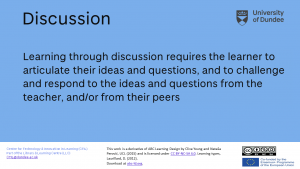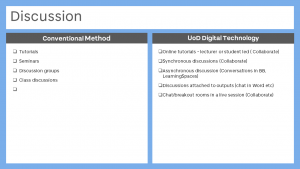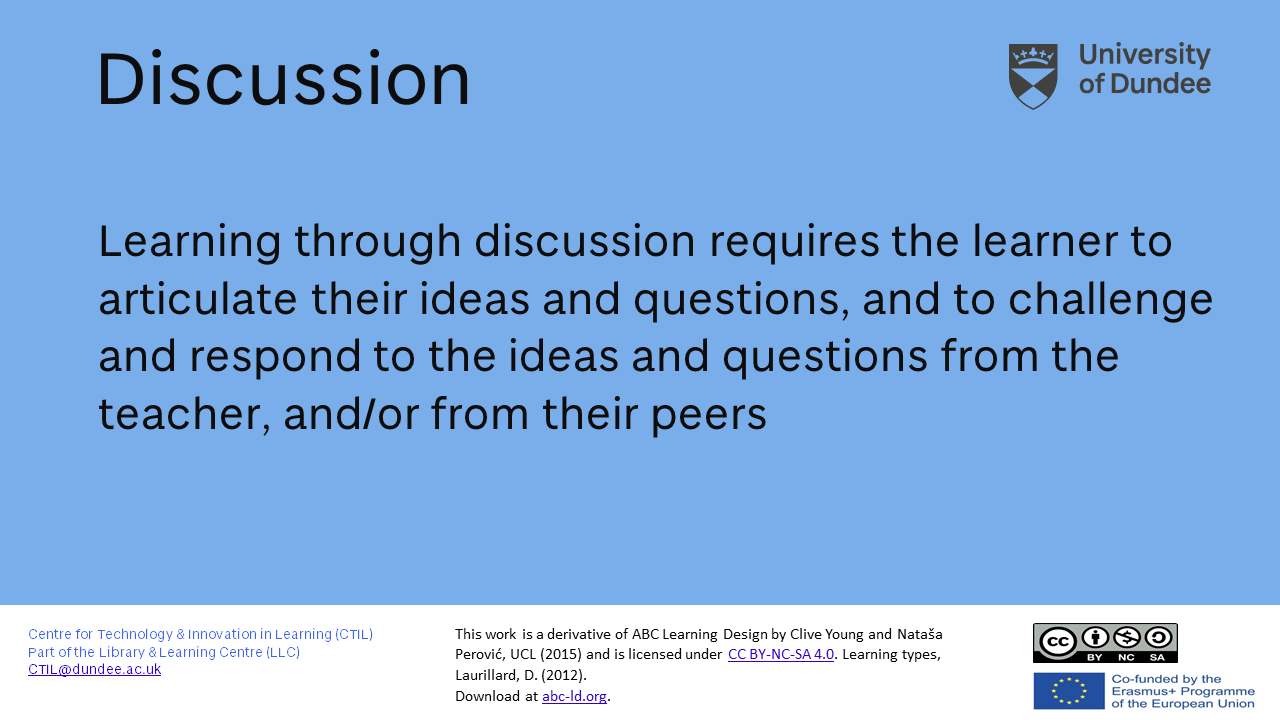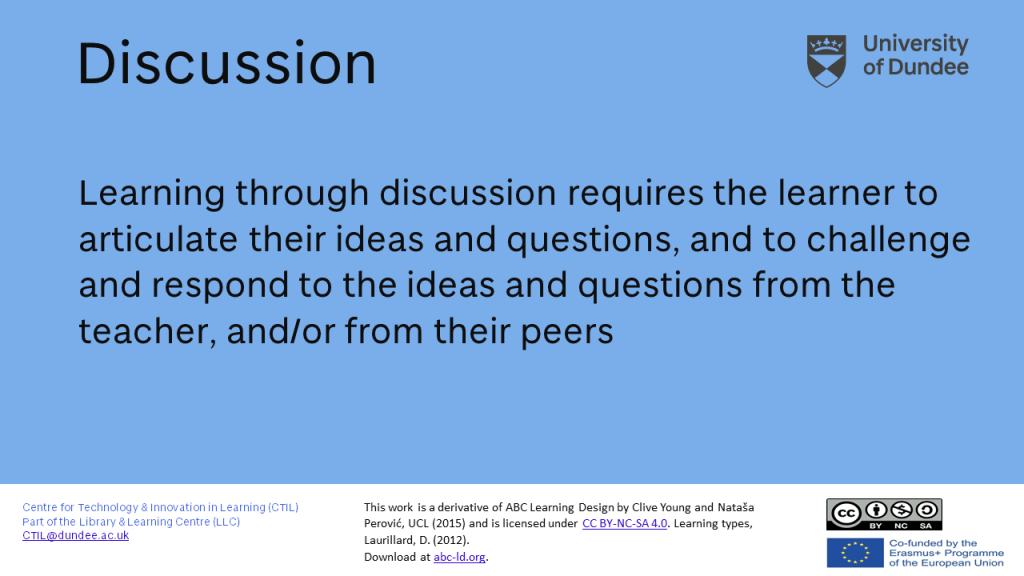Introduction
Next up is the second UCL card, Discussion
You’ll find the Discussion card on slides 5 and 6 in the full slide deck


Moving online
There are several ways to generate lively discussion amongst your students, variety is the key and the more you can encourage your learners to contribute via discussion, the better!
Keep in mind that when moving online, some discussions will take place synchronously (live) whilst some will have to be asynchronous.
Your discussions may be…
- Formal – a guided discussion based on a series of pre-developed questions
- Spontaneous – self-generating, happens organically with no prior planning
- Planned – encourage your learners to suggest solutions to their own problems, whilst still providing support. Get involved, but don’t direct too much!
It’s not just about a ‘comment’. Encourage your students to critique, debate and reflect and to expand and evolve the discussion.
These discussions may need to be organised in different stages depending on the tool/s you use but the beauty is that you can use the technology to capture them.
It’s worth considering the possibilities for evaluating your student contributions and if you are planning learning activities or even assessments around these discussions, get in touch for some further guidance.
We know that getting students to engage with discussion can sometimes be tough. Consider how you can improve your engagement. It’s worth taking a look at Gilly Salmon’s work. While she was primarily looking at socialisation, the model for supporting a group of students to become self moderating can be very valuable in discussions, as it helps the students to become self directed learners.
Over to you
Join our discussion now, we would love to read your thoughts and ideas in the comments area.
- How do you prompt and encourage discussion in your face-to-face teaching?
- How and where could you use prompts to generate discussion in your online module?
- How can you encourage a variety of discussions to best support the module material and learning outcomes?
- Have you considered capturing these discussions? In Digital Wellbeing, when developing a “Chat-iquette”, we asked you to think about what you would, and wouldn’t record. If you do capture a discussion, how might you make the most of it?
- Some of your students might be engaged but not necessarily ‘visible’ or demonstrating their engagement with participation. Why might they be reluctant to participate? Why might some students choose to contribute more asynchronously and how can you support this?
Remember, you can also chat to your digital champions, school Educational Technologists, or come along to a CTIL drop in session (via My Dundee) and discuss your ideas with us!
Other resources
There has been a lot of work into engaging with students through online discussion, you may well have come across them in the past.
- 10 Tips for Effective Online Discussions – One of Educause’s sets of tips – it’s mostly common sense, but always worth reminding yourself of these points
- Discussion Boards: Valuable? Overused? Discuss. As Discussion boards have been around for so long, many may see them as “old fashioned” – this gives some ideas for innovation in their use (after all, books are much older – but we can still find a good use for them!)
As this is a field with a wealth of research, if you have some favourite papers – we’d welcome you sharing them!
Other Dundee Resources
We have a range of resources that can help you.
Ultra 101
The sessions that you might find particularly useful are
Service Guides
Have a look at these service guides for more support
- Collaborate – all our guides for Collaborate
- Adding a profile picture to My Dundee – help you and your students get to know each other
- Mentimeter – Mentimeter can be handy to get students to share ideas anonymously.
Recipes
Staff across the University are contributing to recipes to look at ways of using the tools with students
- Engage students in Online Lectures with Mentimeter How Rachel Horrocks-Birss has used Mentimeter to get students discussing during a class.


